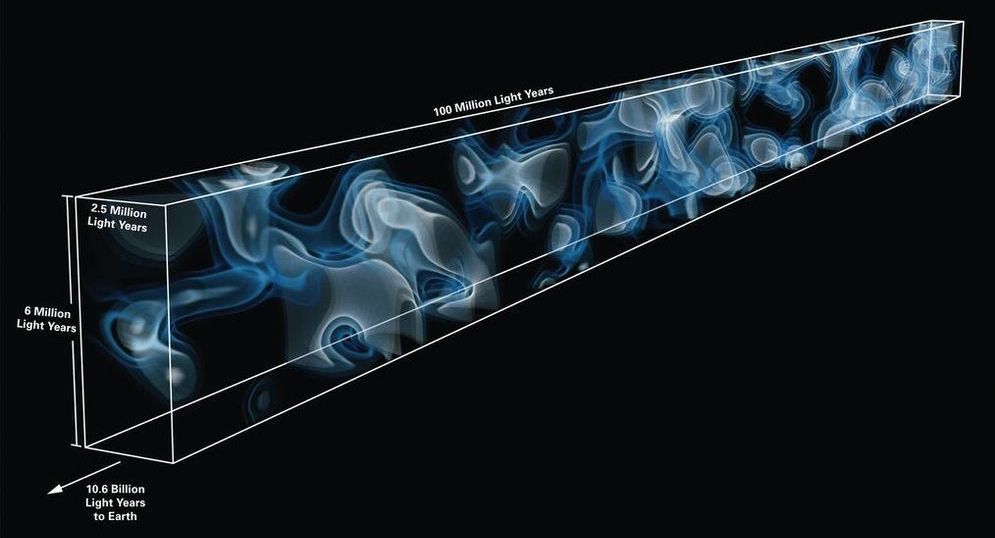Circa 2004
On the largest scales, matter in the Universe is arranged in a vast network of filamentary structures known as the ‘cosmic web’, its tangled strands spanning hundreds of millions of light years. Dark matter, which emits no light, forms the backbone of this web, which is also suffused with primordial hydrogen gas left over from the Big Bang. Galaxies like our own Milky Way are embedded inside this web, but fill only a tiny fraction of its volume.
Now a team of astronomers led by Khee-Gan Lee, a post-doc at the Max Planck Institute for Astronomy, has managed to create a three-dimensional map of a large region of the far-flung cosmic web nearly 11 billion light years away, when the Universe was just a quarter of its current age. Similar to a medical CT scan, which reconstructs a three-dimensional image of the human body from the X-rays passing through a patient, Lee and his colleagues reconstructed their map from the light of distant background galaxies passing through the cosmic web’s hydrogen gas.
The use of the combined starlight of background galaxies for this purpose had been thought to be impossible with current telescopes – until Lee carried out calculations that suggested otherwise. Lee says: “I was surprised to find that existing large telescopes should already be able to collect sufficient light from these faint galaxies to map the foreground absorption, albeit at a lower resolution than would be feasible with future telescopes. Still, this would provide an unprecedented view of the cosmic web which has never been mapped at such vast distances.”
